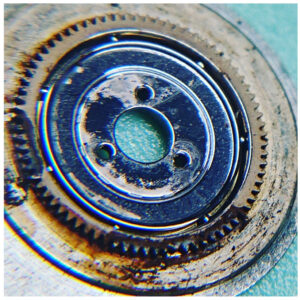In the first part of this blog post we covered some of the potential causes of water damage. But what should you do if the worst does happen and water ingress occurs? In this part we’ll look at what to do (and what not to do!) to give your watch the best chance of being successfully repaired.
If you notice water has made its way into your watch, firstly, immediately stop using the watch. That means take the watch off and under no circumstances should you start pressing buttons or attempting to pull the crown out, adjust the hands etc. This could cause more damage to the movement.
It’s very important you get in contact with a reputable watchmaker like us as soon as you possibly can. Depending on the level of exposure and type of water, your watch may need to be urgently booked in for attention.

If you wait a week before contacting a watchmaker, this gives the water a week to do further damage to the sensitive mechanism. If your watch has been exposed to salt water, this is enough time to completely destroy the movement. When you’re dealing with small parts even one drop of freshwater is enough to ruin numerous components in a short period of time.
Once water has entered the watch, do not attempt to remove it yourself. Don’t heat the watch on a radiator or give it a shake/spin. Doing so will only cause further damage. Until you’re able to get to a watchmaker, putting the watch in a bag with some kind of absorbent like silica gel won’t do any harm, but it certainly won’t fully deal with the problem. There is no short cut solution – we’ve seen numerous watches which have been kept in a bag of rice to dry them out, but on opening the back we find the movement swimming in water.
As you can see, water ingress can only be properly dealt with by a professional watchmaker. Water ingress can result in a hefty repair bill even if the watch is promptly disassembled – this is because watch parts need to be in excellent condition to work correctly. We strongly encourage our clients to have their watches regularly serviced (usually every 3-5 years) and to have water resistance tested every year. By doing so your watch is checked and unless there’s user error (eg. The crown is left pulled out, glass damaged etc.) you can be confident in the level of water resistance your watch is able to provide.
Yours sincerely
David Clark DGA PJDip PJGemDip CertGA
Managing Director
W.E. Clark & Son Limited
